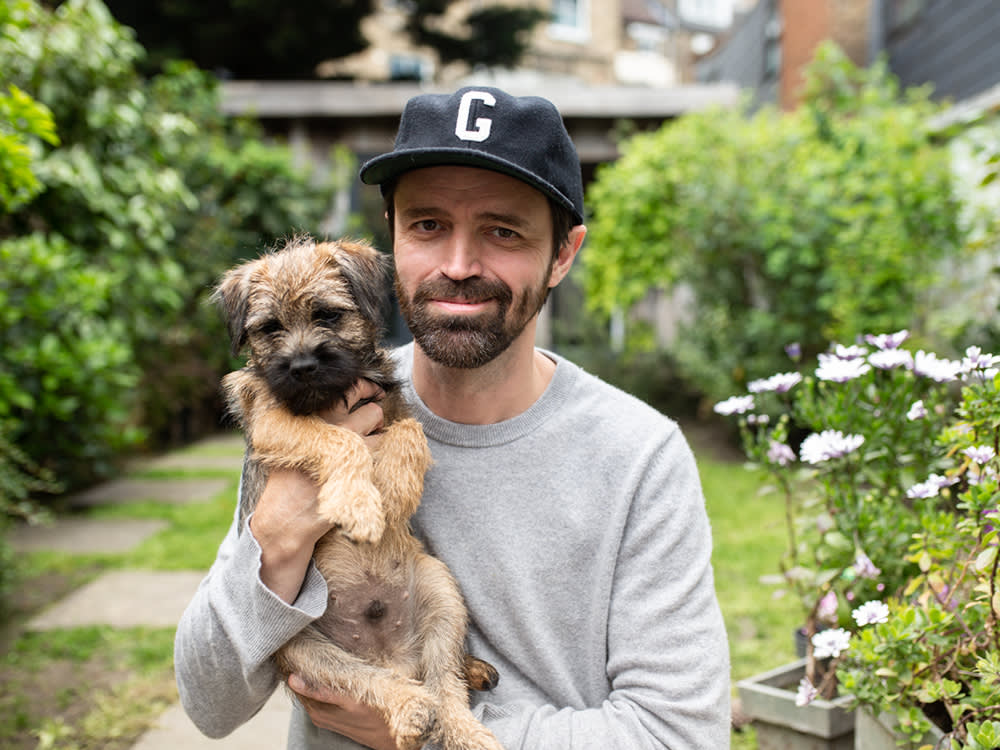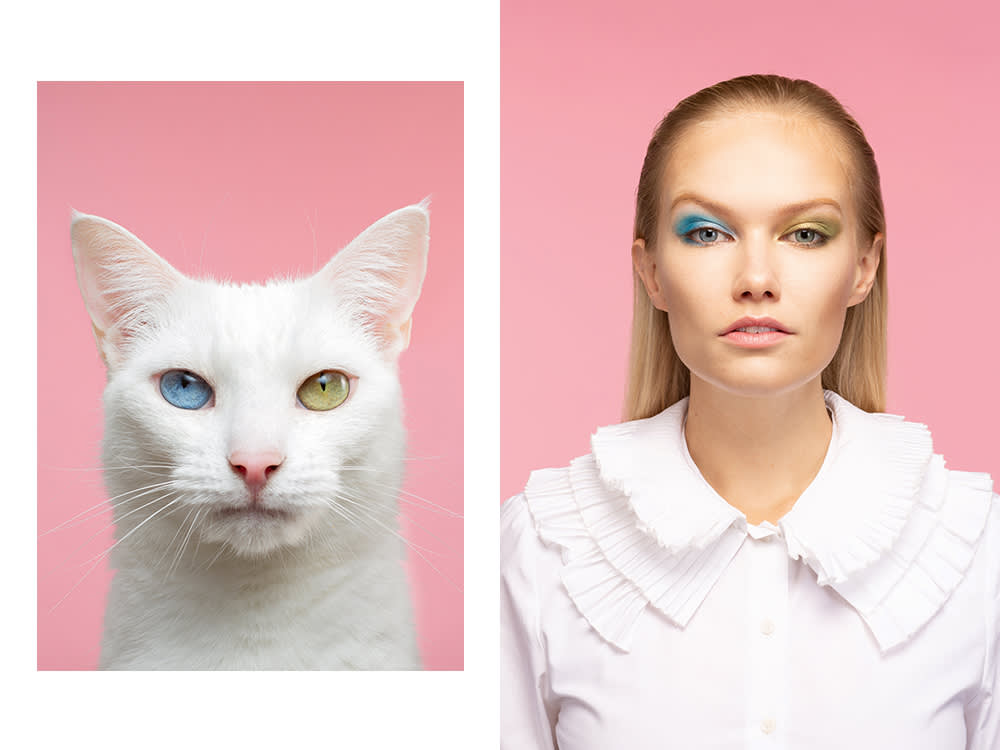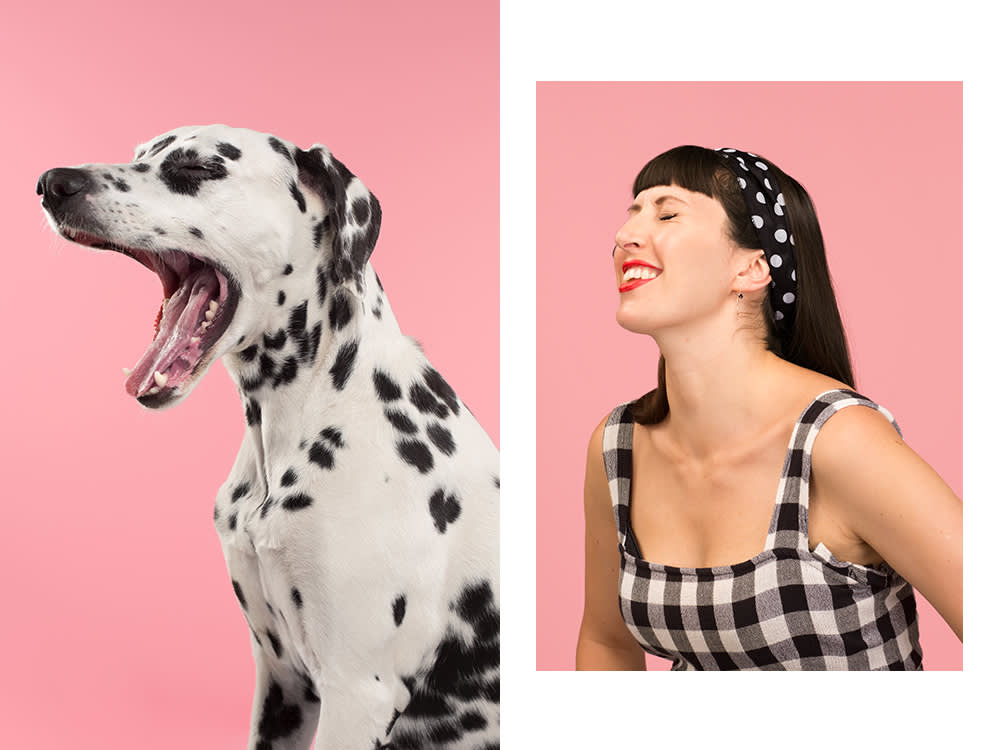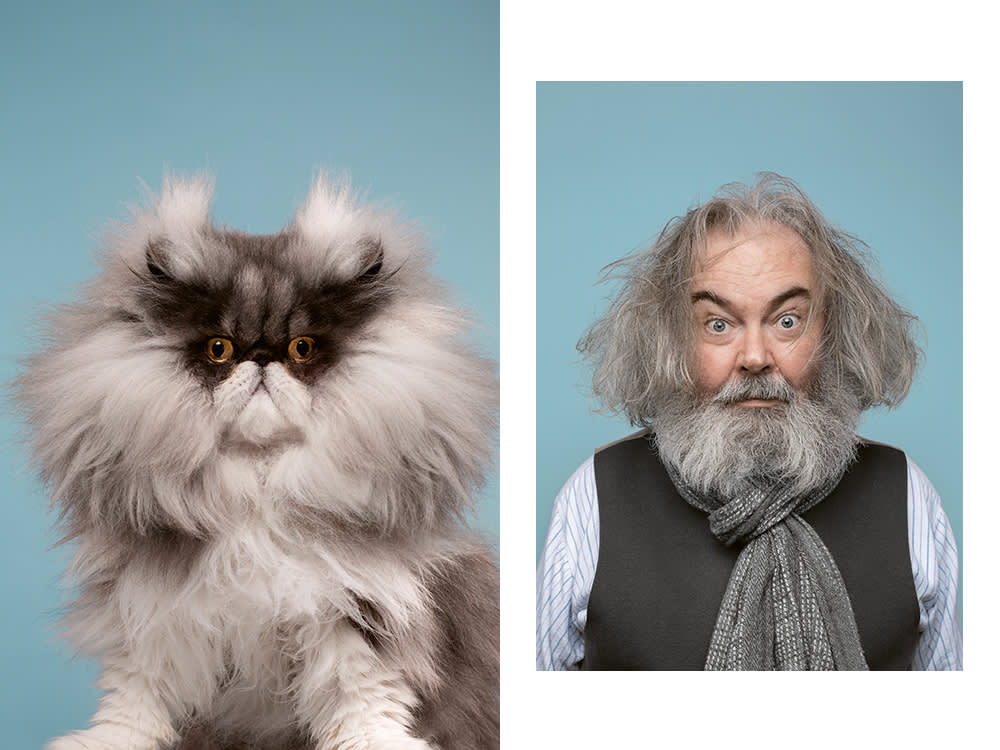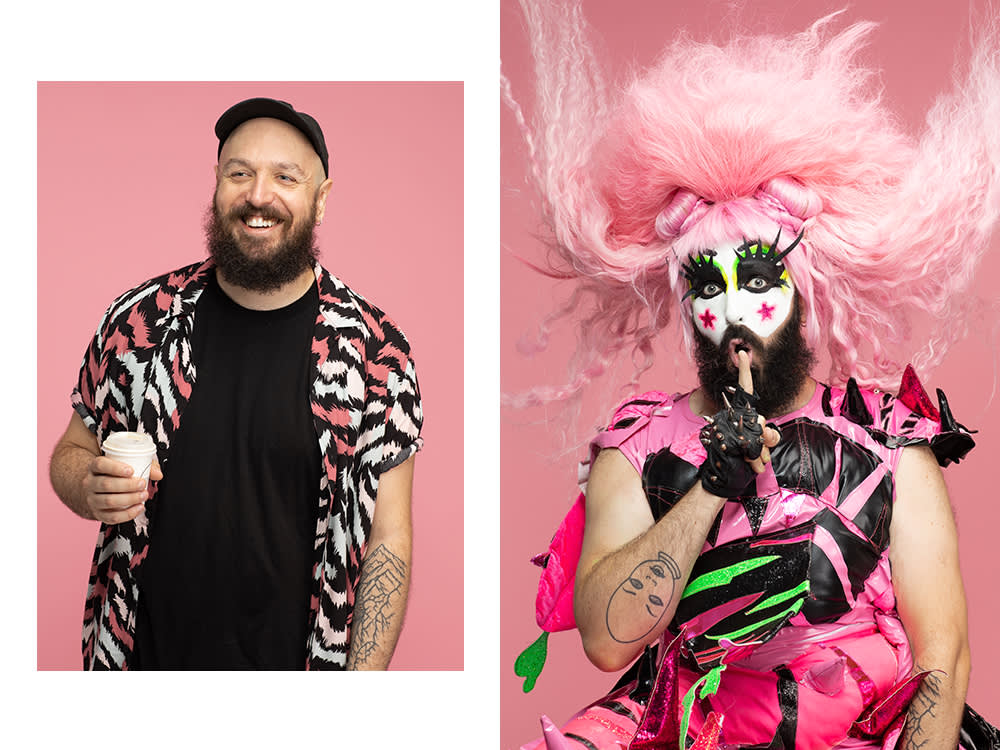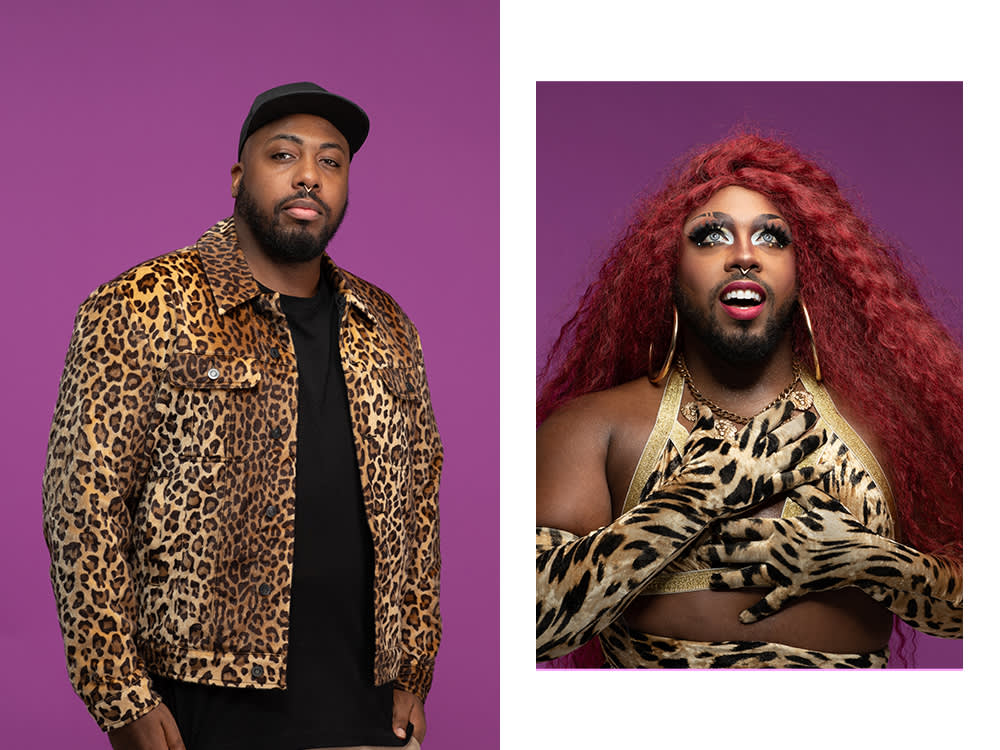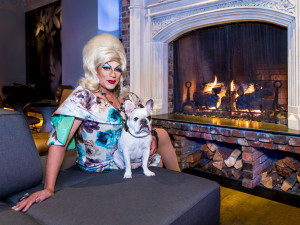Cats, Dogs, and Drag Queens — Through the Lens of Gerrard Gethings
The photographer talks about his Border Terrier assistant, the likeness of people and their pets, and going behind the scenes with drag queens.

Share Article
London-based artist Gerrard Gethingsopens in new tab produces such exquisite studio portraits that he’s been called “the Richard Avedon of animal photography.” His 2020 memory games Do You Look Like Your Dog?opens in new tab and Do Your Look Like Your Cat?opens in new tab paired pets with their human likenesses and sent him viral nearly instantly. The series’ basic concept is as classic as a New Yorker cartoon — jowly businessman walking Bulldog, pampered matron with French Poodle, hirsute professor with bewhiskered Maine Coon — but in Gethings’ execution, the sight-gag turns profound in seconds: urging us to see the animal in the person, the person in the animal, and peer into each one’s soul.
The sensibility was inevitably shaped by the photographer’s long-time assistant Baxter, a Border Terrier he had throughout his career, who he’s claimed to resemble, and who he recently lost to illness. Baxter’s last gig was Gethings’ recent series Drag Matchopens in new tab, stunning before-and-after portraits of drag queens. When he Zooms in from his London home, after pixels settle into a tidy sunlit studio, the face that swims into focus somehow looks oddly familiar. Dark hair, neat beard, deep brown earnest eyes…Oh right!
You do look like a Border Terrier!
Thank you!
I’m sorry for your loss. Baxter sounds epic.
Oh yeah, it sucks. Twelve years ago, my wife wanted a child and I was desperate for a dog. I’d never had my own dog and I kind of felt you’re not really a man if you haven’t got a dog. Not a kid, a dog. Of course, a child changes everything but Baxter proved I could least give a good life to someone else.

So you didn’t get a dog just to refine your photography craft.
The animal thread runs through everything I do. Because, I just like being around animals, always have.
Was he actually your assistant or was that half a joke?
Oh absolutely, he was. With portrait photography you always use your assistant as a stand-in to set lights. My human assistant hasn’t got fur or a black nose and hates being on all fours. Plus, Baxter was just so used to the whole gig. I could get him to do anything with just a look. Raise my eyebrow and he’d raise one ear. Speak a certain way and he’d cock his head. He set up everyone else to fail.
Did you bring him to human sessions too?
I always bring my dog to work. Shooting with him and shooting without him were totally different experiences. The whole dynamic of the shoot is different. It’s like putting your cards on the table, it changes the energy. Works all the time.
You recently acquired another Border Terrier.
His name’s Barry Gibb and he’s gorgeous, really beautiful, but still wild right now — he’s only 14 weeks old. I started training him immediately, so he’s got a few moves. But I like the company of older dogs. Also, if you show up with an old dog, people assume you’ve had that dog for their whole life. Their very presence recommends you.
Animal subjects compel you to work with both speed and sensitivity. What are your secrets?
With animals, you get instinctive. There’s no pandering, no subtext — it’s just happening. And I know how they’ll likely react to different things. Almost all dogs are into food. Certain breeds respond to movement, others to sound. Whippets: if something moves, they can’t not look at it. So, you get the dog where you need it to be, then try to get an expression. Not a specific expression. You can’t tell a Bichon Frise, ‘OK, I need you to look…slightly lost and distant.’ You just work with them until you see that thing, whatever it is.
Same with cats?
No, cats are a whole different world. We had to go to each cat’s house, some quite far away, and even then some just refused to play ball. I once photographed a trained cat. It was supposed to be good to take to a studio, not hiss at passengers on the train. But soon as I got them in the studio…
What inspired your before-and-after drag series?
One of the guys I met shooting the cat stuffopens in new tab was someone whose drag name is Daisy Puller. He’s really connected in that world and hooked me up with a lot of other performers who weren’t working because of Covid. I’m not sure I would’ve gotten such great subjects otherwise. It was amazing.
What did you learn?
Some were tamer versions of their drag act, but others were really shy. The only challenge was making them comfortable out of drag. Drag is performed in such a physical way that makes them easy to photograph. They’re so beautiful, all of them. It’s hard not to make a great photo.
How do you feel about, say, William Wegman’s work?
You can’t ignore him. His technique’s beautiful, his images are cinematic, and the Weimaraner is the perfect color: Grey is a dream; shiny grey, even dreamier. The one thing I don’t particularly care for is dressing up the dogs — but that’s just not my thing.
You prefer to work with nude models.
Yeah, all nude. I don’t even like them wearing collars. Apart from the French Bulldog with the priestopens in new tab — the priest is wearing a collar! But you know, the shot’s still quite revealing.
Gethings is part of a group show of animal photography at the Musée de la Vie Wallonne in Belgium until December 2021.
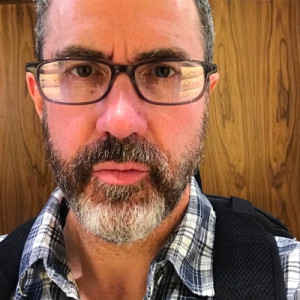
Chris Norris
Chris Norris is a writer, reporter, author, and longtime companion to West Highland Terrier Gus, recently departed but intensely loved. He has written for The New Yorker, New York Magazine, The New York Times Magazine, Rolling Stone, GQ, Details, and NPR’s All Things Considered, and is the co-author of Tao of Wu. He lives in New York City with his wife and 10-year-old son.
Related articles
![]()
Legendary drag queen Juanita More on her Pride plans, LGBTQ+ activism, and her Pride mascot, Frenchie. Juanita More & Jackson
"I commission a lot of work from local artists for my Pride events and I always try to incorporate Jackson... It’s incredible to see how artists capture his many moods: from grumpy to tongue-waggingly happy!"
![]()
Photographer Angela Pham on Training Her Japanese Spitz
How she taught Turtle to ring a bell, open a door, count to four, and walk with a limp!

